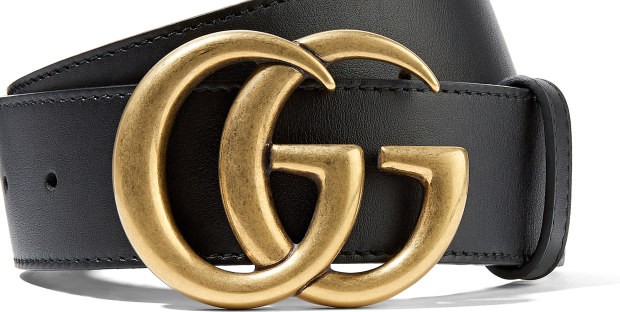Online retailer Cettire taps into children’s market
Luxury clothing and accessories e-tailer Cettire is tapping into the lucrative children’s wear sector to take a larger share of customers’ wallets and attract new shoppers to its site.
The online retailer, which sells about 1300 designer brands, has established a new vertical on its website selling children’s wear brands including Burberry Kids, Moncler Enfant, Gucci, Chloe, Comme de Garçon, Diesel and Dolce & Gabbana Kids.

Online retailer Cettire, which sells luxury goods such as Gucci, Burberry, Fendi and Dolce & Gabbana, has expanded into children’s wear.
Cettire founder and chief executive Dean Mintz said the retailer had access to more than 6000 children’s wear products and would seek to expand its range over time.
“The children’s wear category is an attractive adjacent segment in the luxury apparel industry,” Mr Mintz said.
“We are excited by the expansion of Cettire into children’s wear and see excellent growth prospects for this category,” he said.
“Having rapidly scaled Cettire over the past three years, our expansion into children’s wear is a natural extension of our range.
“It increases Cettire’s addressable market, whilst also providing scope to grow share of spend with existing customers and introduce new potential customers to Cettire’s online luxury goods platform.”
More expansion opportunities
If the expansion of The Iconic is any guide, Cettire might eventually move into beauty products, athleisure and sporting goods and could potentially add luxury watches and jewellery to its site.
The expansion into children’s wear highlighted the scalability of Cettire’s business model, Mr Mintz said, and the company continued to assess further opportunities.
Like online luxury goods retailer Farfetch, Cettire operates a marketplace model – taking a commission of about 30 per cent on sales – and does not own any inventory.
Its drop-ship model means orders are sent from third-party suppliers directly to customers, so it can avoid the risk of being left with unsold stock. Order fulfilment is fully automated.
As reported by The Australian Financial Review last month, Cettire does not have direct relationships with brand owners but sources stock from retailers and wholesalers.
Possible challenge ahead
Fund managers have expressed concern that as the e-tailer grows, brand owners might eventually crack down on supply and stymie Cettire’s ability to source and sell goods at a discount.
Farfetch faced the same challenge a decade ago, initially sourcing directly from boutiques before brand owners stepped in. Farfetch now has direct relationships with brand owners.
“There is a risk these brand owners force some of these wholesalers not to sell to Cettire and that could impact them,” Ron Shamgar, head of Australian equities at Tamim Asset Management, told the Financial Review last month.
Cettire has geoblocked IP addresses originating from Italy, where most of its products are sourced, preventing brand owners from seeing the products and prices it offers.
It has dismissed concerns about the sustainability of its business model, saying its supply arrangements are underpinned by legal contracts and it has ongoing dialogue with a range of brands to discuss partnership opportunities.
It is understood several major brands have contacted the company about selling through its marketplace so they can bypass wholesalers.
Cettire shares rose 5 per cent on Thursday to $2.77. The stock has risen more than five-fold since its $65 million initial public offering in December 2020 at 50¢ a share.
Cettire upgraded sales forecasts last month, saying it expected full-year 2021 sales to reach at least $85 million, and statutory EBITDA would be positive (subject to timing of brand marketing initiatives).
Subscribe to gift this article
Gift 5 articles to anyone you choose each month when you subscribe.
Subscribe nowAlready a subscriber?
Introducing your Newsfeed
Follow the topics, people and companies that matter to you.
Find out moreRead More
Latest In Retail
Fetching latest articles